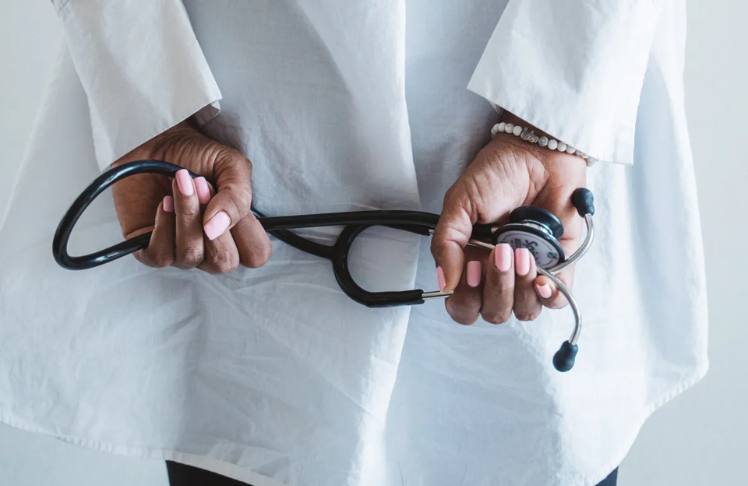
A group of students at New York City’s Mount Sinai Icahn School of Medicine are calling out segregation in health care and its impact on Black patients.
After investigating the racial divide in insurance coverage and how it can determine the quality of care a person receives, the group is advocating for more education about the issue in medical schools.
But they’re not waiting on the schools to teach this information.
In an article recently published in the American Medical Association’s Journal of Ethics, the team details their efforts to develop the curriculum themselves.
“The primary goal of advocacy to teach segregated care is always desegregation, so curricular inclusion efforts are needed to educate students about the inequitable systems they are entering and to provide them with tools to advocate against such systems,” the authors wrote.
In New York State, where the students attend Mount Sinai, “segregated care also manifests as health insurance inequities.”
There, nonelderly Black adults are more likely to be enrolled in Medicaid than their white counterparts. But still, not every Black adult can access that coverage.
Due to eligibility restrictions, Black Americans are restricted from public insurance at nearly two times the rates of white Americans. Being undocumented, earning less than 50% of the federal poverty level, or not having dependent children are a few requirements that leave some people out.
Black adults in New York State are also more likely to be uninsured than white adults.
Data from the Kaiser Family Foundation indicates that this is a national issue. Based on research from 2010, Black adults have been uninsured at higher rates for over a decade.
The students insist that the divide in health insurance is, by default, racial segregation, and contributes to race-based disparities in health outcomes and access to clinics, physicians, dentists, and pharmacies.
In 2014, Icahn School of Medicine students first addressed the issue by forming the Segregated Care Student Workgroup. Through the organization, they investigated segregated care within Mount Sinai’s health system.
Posing as “secret shoppers,” the students discovered that callers with Medicaid waited on hold significantly longer to make an appointment, as well as for a scheduled appointment.
“While individual clinicians might give the same care to all of their patients, insurance that segregates patients by race, class, and associated proxy markers results in unequal treatment,” the authors wrote.
The student organization continued its research to examine segregated care, and as of 2018, four fourth-year students, who authored the recent report, have committed to dismantling the issue through medical education.
They think that “training students in a segregated system normalizes the practice and implicitly perpetuates racism.”
So, they’re proposing the school adopt a teaching model that does the opposite.
The proposed education framework includes mandatory presentations for first and second-year medical students designed to prepare them for the experience of segregated care.
Additionally, optional extracurricular opportunities include “Chats for Change” (a Mount Sinai Health System-wide interactive discussion format) and chances to participate in the Segregated Care Student Workgroup.
While the teaching model focuses on segregated care within New York City and the Mount Sinai Health System, the students encourage student-advocates at other institutions to use it as a guide.
Leona Hess, a coauthor and senior director of the Strategy and Equity Education Program at Icahn Mount Sinai, expressed support for the students’ efforts.
“Segregated care, which exists widely in health care, including in our own hospitals, is one of the key reasons for race-based disparities in health outcomes in our clinics, hospitals, and even pharmacies,” she said in a statement. “School leadership not only applauds the work of our students but supports their efforts to create a lens through which we can see clearly what is right under our noses.”















